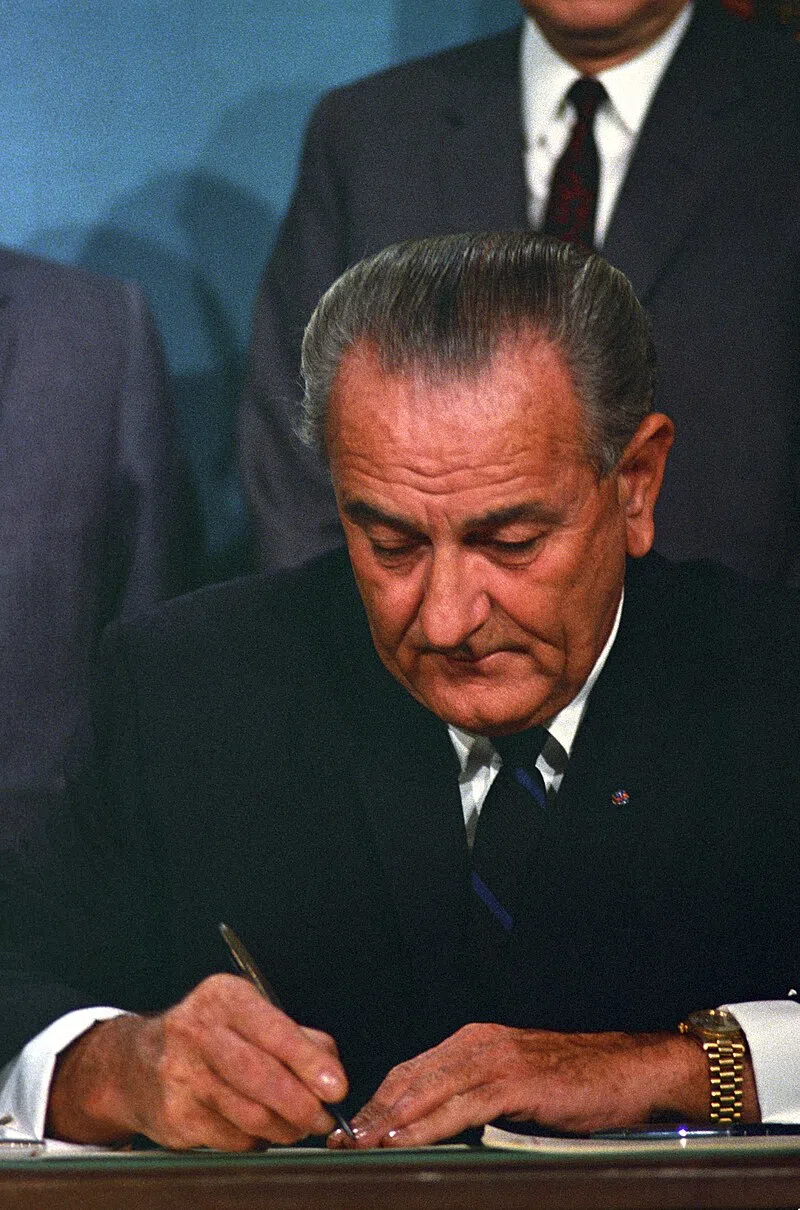
President Lyndon B. Johnson signing the Public Broadcasting Act of 1967
ALBUQUERQUE, N.M. — Public broadcasting stations across New Mexico are facing major budget reductions following the Trump Administration’s decision to eliminate over $1 billion in federal support for local media. The Corporation for Public Broadcasting (CPB), which has supported public media for nearly six decades, has announced it will begin shutting down operations.
Public broadcasting was established in the late 1960s to provide educational, cultural, and public affairs programming that commercial media often overlooked. The Public Broadcasting Act of 1967 created the CPB to ensure that all Americans—regardless of income or location—had access to high-quality, non-commercial media. Over the years, public broadcasting has become a vital source of local news, emergency alerts, and culturally relevant content, especially in rural and tribal communities.
Now, many of those services are at risk. In Albuquerque, U.S. Senators Martin Heinrich and Ben Ray Luján met with station managers to discuss the impact of the cuts. KRWG in Las Cruces expects to lose $1.1 million next year, which could lead to staff layoffs and service disruptions. KUNM anticipates a 12% budget cut, potentially reducing coverage of local government and politics. KENW in Portales is facing even steeper losses—38% of its television budget and 27% for radio.
Tribal stations like KTDB in Ramah, which rely heavily on federal grants, are also at risk. General Manager Barbara Maria says the station’s Navajo-language programming and children’s content could be lost. “We speak in Navajo languages, and this is really something vital,” Maria said.
The funding cuts extend beyond broadcasting. A $28 million reduction in federal education grants could eliminate many children’s programs, including those produced by The Children’s Hour, which focuses on diverse voices and science education.
Why It Matters in New Mexico
New Mexico’s geography and demographics make public broadcasting uniquely essential. Vast rural areas and tribal lands often lack reliable internet or cell service, leaving residents dependent on radio and television for emergency alerts and local news. Public stations also serve as cultural anchors, preserving Indigenous languages and traditions through programming not found elsewhere.
Educational equity is another key factor. Many children in underserved communities rely on public media for access to educational content, especially where broadband access is limited. Programs like The Children’s Hour help bridge gaps in science literacy and representation.
Local journalism is also at stake. Stations like KUNM and KENW provide in-depth reporting on state and local issues—coverage that is increasingly rare in commercial media. Without it, civic engagement and government accountability could suffer.
Station leaders warn that the loss of public media could mean fewer emergency alerts, less local news, and reduced access to culturally specific programming—especially in areas without reliable cell service. For many New Mexicans, public broadcasting is not just a service—it’s a lifeline.








